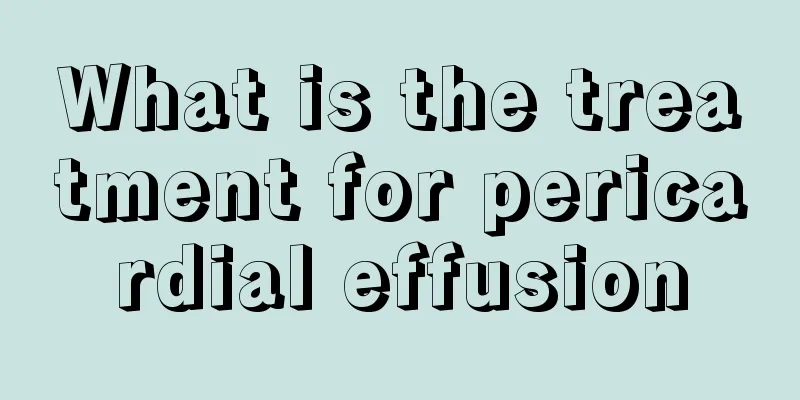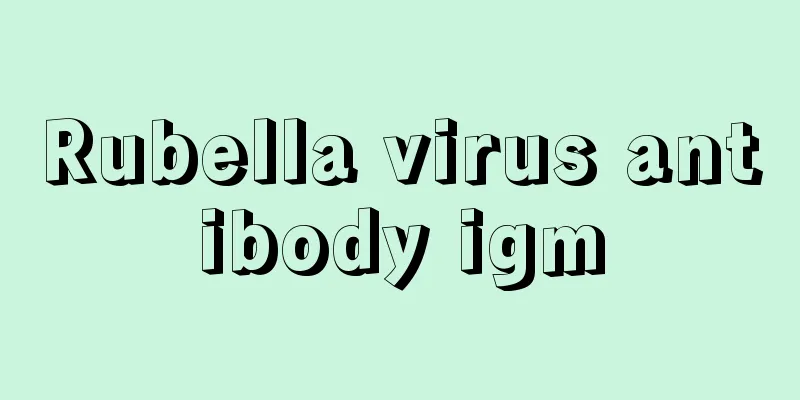What is the treatment for pericardial effusion

|
Pericardial effusion poses a certain threat to heart health. If you feel uncomfortable in your chest, you should go for a check-up in time. Pericardial effusion is treated depending on the situation. If the effusion is mild, medication can be taken and then observation can be performed. General treatment of pericardial effusion 1. Medical treatment There is a lack of consensus on treatment options, and most of them depend on the personal experience of the therapist. Drug treatment includes the use of hormones, anti-inflammatory drugs, anti-tuberculosis drugs and other causative treatments. When there are no symptoms, the patient can be observed without medication. Pericardiocentesis can relieve symptoms and extract pericardial fluid for analysis to aid diagnosis and treatment, but its own therapeutic effect is not certain and it is no longer the main treatment method. 2. Surgical treatment The purpose of surgical treatment is to relieve existing or potential pericardial obstruction, clear pericardial effusion, reduce the possibility of recurrence of pericardial effusion, and prevent late pericardial stenosis. If the diagnosis is clear and drug treatment is ineffective, pericardial drainage and pericardiectomy can be performed for this disease. 1. Subxiphoid pericardial drainage is simple and rapid to operate, with less damage, clear short-term effects, and fewer pulmonary complications. It is suitable for critically ill patients and elderly patients; however, the recurrence rate of pericardial effusion after surgery is high. To reduce the recurrence rate, the extent of pericardial resection can be increased. The method of subxiphoid pericardial drainage has a history of more than 160 years, and it was called pericardial window in the 1970s. However, the therapeutic mechanism of pericardial fenestration has only become clear in recent years. Studies have shown that on the basis of continuous and adequate drainage, fibrous adhesions appear between the epicardium and pericardium, and the pericardial cavity disappears, which is the reason why pericardial fenestration has long-term therapeutic effects. The technique of subxiphoid pericardial drainage: The incision starts from the lower end of the sternum and extends downward, with a total length of about 6 to 8 cm. A midline incision was made on the upper part of the linea alba to expose and remove the xiphoid process. Bluntly separate the loose tissue between the posterior wall of the sternum and the anterior wall of the pericardium. Use an external retractor to expose the upper abdominal incision and use a right-angle retractor to pull up the lower end of the sternum. The anterior pericardial wall was incised and the pericardial fluid was removed. The pericardium was removed to about 3cm×3cm and the pericardial window was completed. A pericardial drainage tube was placed through another small incision next to the incision. Suture the incision. The pericardial drainage tube is left in place for 4 to 5 days. 2. Partial or complete pericardectomy and chest drainage through the chest cavity. This method can achieve complete drainage and has a low recurrence rate. Since more pericardium is removed, the sources of pericardial effusion and pericardial stenosis are reduced, so the surgical effect is accurate and reliable. However, the surgery causes significant damage and may lead to lung and incision complications. Surgical procedure for partial or complete pericardectomy: It can be performed through a median sternotomy or through a left anterior or right lateral thoracotomy. ⑴ Partial resection: starting from the fold of the pericardium on the great blood vessels above and close to the diaphragm below; resection to the left and right sides reaches 1 cm in front of the phrenic nerves on both sides. ⑵Complete resection: starting from the fold of the pericardium on the great blood vessels above and ending at the midpoint of the diaphragmatic pericardium below; the right side is resected to 1 cm in front of the right phrenic nerve, and the left side is resected to the left pulmonary vein, taking care to preserve the left phrenic nerve and not damage it. After pericardiectomy, the drainage tube is led out through the chest cavity and retained for 4 to 5 days after surgery. |
<<: What does premature beats on an electrocardiogram mean?
>>: What are the nursing measures for heart failure
Recommend
How to wash away stubborn oil stains
Children nowadays are very playful and easily get...
A brief analysis of the symptoms of bladder cancer
In recent years, bladder cancer has become one of...
Are teeth inherited?
Some parents who don't have very good teeth w...
Several common symptoms of bladder cancer
It is understood that there are many people suffe...
What to do if you have severe stomach problems and vomiting
Gastric disease is a general term. There are many...
What diseases can cause bad breath?
The problem of bad breath is a very easy problem ...
Can soaking sea buckthorn in wine lower blood sugar?
Can drinking sea buckthorn wine lower blood sugar...
Will glioma affect life expectancy?
Many patients do not know much about glioma. Once...
What are some tips for eliminating triple eyelids?
Eyelids are a type of tissue that maintains the i...
Understand what your child lacks in one second
The health of babies is something that almost eve...
Diffuse abnormal echo of thyroid gland
The thyroid gland can be said to be the most impo...
Which sanitary napkin is better?
I believe that female friends are very familiar w...
Where is the lower part of the body
The lower abdomen is a term used in traditional C...
What harm does stupidity do to the human body
Benzene is a colorless, transparent liquid with a...
What are the common early symptoms of lung cancer? Introduction to 4 early symptoms of lung cancer
The typical symptom of lung cancer is coughing, w...









